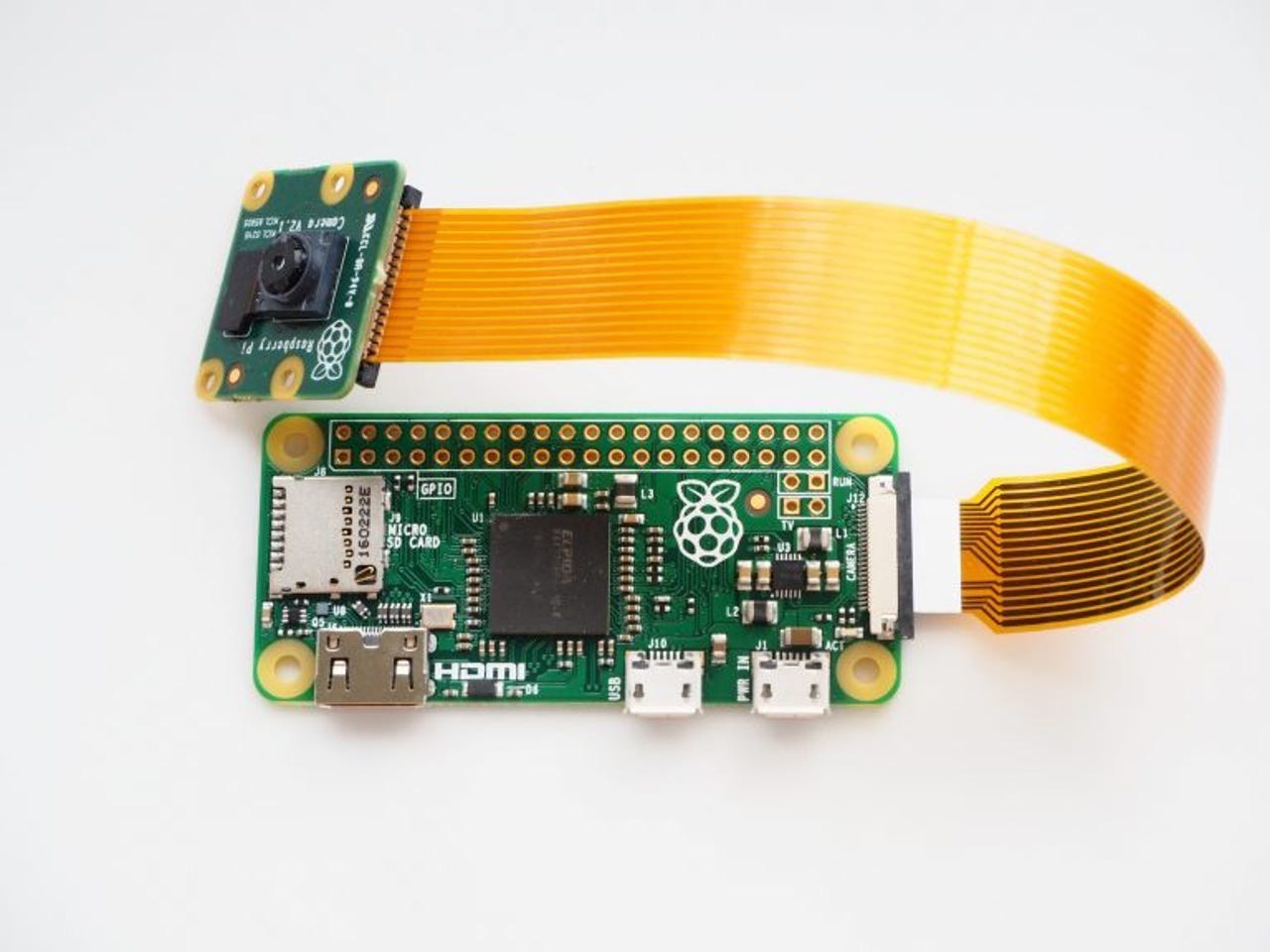Hands-On: A case for the Raspberry Pi Zero with camera


The Raspberry Pi Zero Camera
Last May the Raspberry Pi Foundation announced the Pi Zero (v1.3), with a camera connector. Thanks to the good people at Pi-Shop.ch, I was fortunate enough to get one in the first week after the announcement, but demand has been so high that they have been like hen's teeth ever since. Now it seems like production is finally catching up with the demand, and they have been showing up in stock at some distributors.
They're still not growing on trees (or raspberry bushes), though. There are two ways to buy a Pi Zero - either the board only, for about £4/$5, or in a "Kit" or "Starter Pack" with some assortment of port adapters and/or GPIO headers and/or cables and/or microSD card and/or power supply. The kits cost something like £10-£25 / $15-$50 depending on the content.
Some distributors show the Pi Zero board-only as unavailable, and some are willing to sell "one per customer", but all of the ones I looked at were at least offering various kits now. I just have to wonder how much of the scarcity of the board-only is really due lack of available parts, and how much is simply the fact that there's not much profit margin in selling something for $5.
The Pi Zero Camera Cable.
Because of the very small size of the Pi Zero and the fact that the camera connector was added to some space that was made available in a revision of the board design, it has a different (smaller) connector for the camera ribbon cable than the standard Raspberry Pi. That means it requires a special cable, which will cost you approximately as much as the bare-bones Pi Zero. Yikes!
I choose to look at it differently (sometimes called the Pollyanna Perspective) -- it is a testament to what a good job the Pi Foundation did in keeping the price of the Pi Zero as low as possible, or that it is only a fraction of the cost of the Pi Camera Module.
Raspberry Pi Zero v1.3
The camera connector added significant bulk to one end of the Pi Zero (at the opposite end from the microSD slot, of course). That bulk causes problems for the original Pi Zero cases -- either they don't fit at all, or they don't have a slot for the camera cable to pass through.
Without a case, though, the Pi Zero + Camera Module make for a floppy, unwieldy combination. I have been concerned about damaging the camera module or the cable, so I have been looking for a good case to hold them both.
Pi Zero Camera Box
What I finally found was the ModMyPi Pi Zero Camera Box. This handy little unit encloses the Pi Zero, Camera Module and Cable, and costs about £11 (or CHF 20.- where I got it). It has provisions for a wall mount on the back, and an optional magnetic camera lens. The clear plastic lens guide shown in the picture can be omitted if you aren't going to use magnetic lens attachments.
The case comes as a kit which requires assembly (it sort of reminds me of a very small flat-pack box). It's not difficult to assemble, but you have to be very careful and pay close attention to what you are doing because there are quite a few small parts included, including eight very small, very thin and very transparent washers. I would suggest doing the assembly on some kind of dark surface if at all possible.
The Assembly Instructions are good, very complete and include lots of pictures. Here are a few notes and comments that I made during the assembly.
- All six pieces of the case and the clear plastic lens guide have a clear adhesive film on both sides which should be peeled off before assembly.
- The hole cut through the front panel for the camera lens also has a plastic film around it which needs to be removed.
- Those eight tiny, transparent washers are extremely difficult to see (especially with old eyes), and extremely difficult to handle. They would be ridiculously easy to lose.
- The assembly manual describes a set that includes a wall mounting bracket; mine didn't have that, it came with four stick-on rubber feet.
- Getting the four tiny nuts to start and thread properly on the screws to mount the camera module is very tedious. Fat fingers don't help.
- The camera cable makes an S-curve inside when you close the case up. If the cable came with a paper label stuck on it you will probably have to remove that because it is too stiff to make the S-curve.
Assembly should have taken about 10 minutes, but it turned out to be more like 30 minutes because of the time I spent fiddling with those transparent washers, and looking for the one nut that I dropped on the floor.
The holes in the side of the case for the Power/USB/HDMI connections are large enough that they don't interfere with any of the cables or adapters that I have. There is also a hole in the end of the case to give access to the microSD card.
The Pi PIR Motion Sensor Camera Box for the Zero.
ModMyPi has a number of other interesting and useful cases. There is a Sensor/Camera variation of this unit, for example, which also has a place to mount a PIR Motion Sensor. This is a good combination for specific purposes such as security systems, and lots of fun/interesting projects.
There are equivalent cases for the "normal-sized" Pi 1/2/3 units as well, along with a variety of lenses and wall mounts.
While I am on the subject of Pi Zero cases, there are two other examples that I have tried.
Pibow Zero Case
One is the original Pibow Zero case, which to be honest is still my favorite because it is so small and simple. In my opinion it really matches well with the general concept of the Pi Zero. It's fun to show this to someone who doesn't know about the Pi Zero and watch their reaction when you tell them it is a complete computer system.
My only complaint about this case is that it doesn't have a slot for access to the microSD card. For most people that's not a big deal, but with the amount of card-swapping I do, partially disassembling the case every time gets old pretty quick.
The other minor issue is that because this case was designed for the original Pi Zero, it doesn't fit on the new Pi Zero v1.3 because of the bulk of the camera connector.
Pibow Zero Case v1.3
Which brings me to the new Pibow Zero v1.3. There is space for the camera connector on this one, and of course for the camera cable to feed out of the case. According to the Pimoroni web page this case is not suitable for the original Pi Zero, but I don't see the original case listed there either. Hmmm.
The feature list mentions that this case encloses the microSD card, so it still has that minor issue...
Zero4U Case
I wrote last year about the Zero4U 4-port USB adapter for the Pi Zero. There was also a case for that, which encloses the complete Pi Zero / Zero4U assembly, with cut-outs for all the various connectors and access to the microSD card. It assembles in a way that is very similar to assembling the Pi Zero Camera Box above.
That case has now been updated to accommodate the Pi Zero v1.3, but unlike the Pibow case, this new one also still fits the original Pi Zero as well.
The few cases I have mentioned and shown here are literally just a drop in the bucket. The Raspberry Pi distributors all have pages and pages of cases listed, in just about every size, shape, color and material you can imagine. Most are either plastic or metal, but there are even some which are wood, cardboard and even more exotic materials. There are plans available for 3D-printing your own case, and there are services which will make custom branding/embossing of text, images and logos.
There's a whole world of fun out there just waiting to be explored!